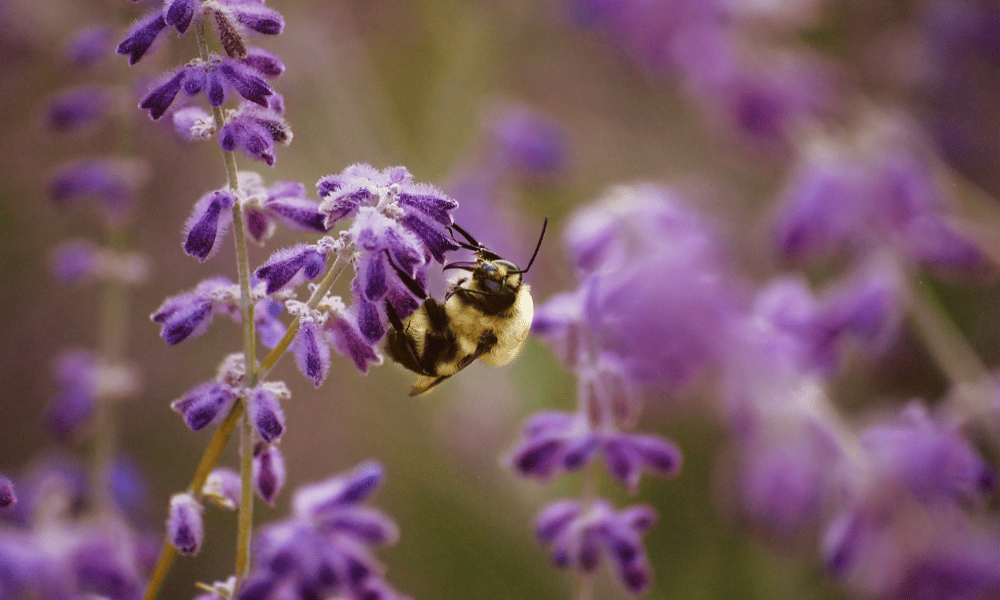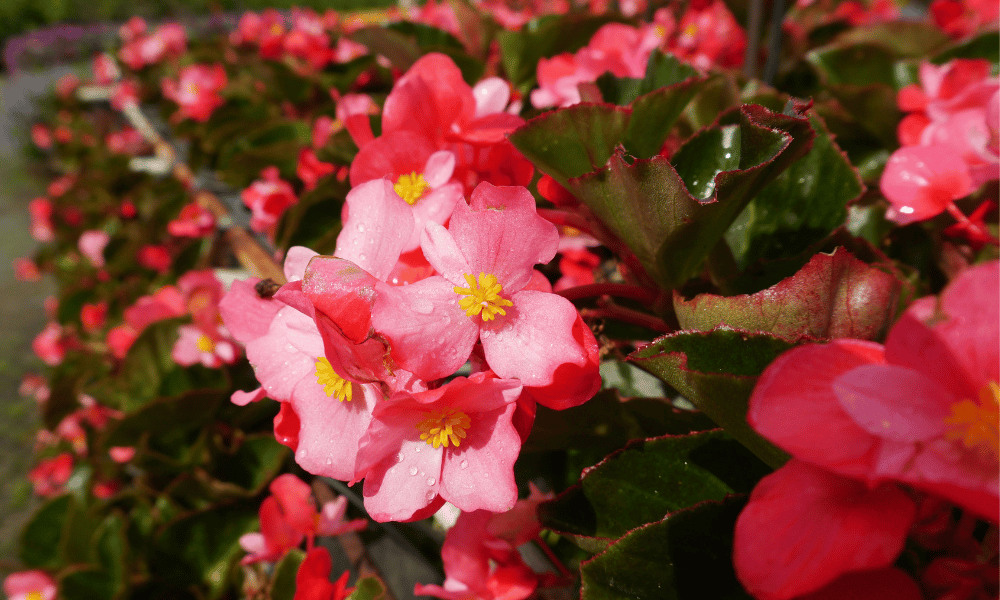As gardeners, we all love seeing bees buzzing around our flower beds and veg patches but, as more and more wild meadows disappear and urban areas continue to expand, bees are becoming less and less of a sight. And that’s why we’ve put together our complete guide on how to attract bees.
The best way to attract bees is to fill your garden with bee-friendly plants including borage, lavender, aster, scabious and sedum. You can also install bee houses to encourage them to stay in your garden.
There is a lot to attracting bees. It’s not a case of heading down to your local nursery, picking up a handful of bedding plants you like the look of, sticking them in the ground and hoping bees will materialise.
Instead, you need to pick the right flowers, put them in the right positions and avoid some common mistakes. That’s why we’ve put together this guide:
Why Should You Attract Bees?
Bees are hugely important. There are no two ways about it. The main reason for this is that they are the number one pollinator across the globe. In fact, some numbers claim that bees are responsible for close to 90% of all pollination in the world.
It’s thanks to bees that our fruit and vegetable crops produce edibles. It’s thanks to bees that flowers spread providing food to insects who are in turn food for larger predators.
Approximately 1 in every 3 bites of food you take are thanks to bees. Without bees, we as humans would struggle to survive as a race with economic distress and famine.
Sounds bleak? Maybe even a little melodramatic? Then check out these sources for more information on the detrimental impact a lack of bees could have on our lives:
- BBC: What Would Happen If Bees Went Extinct
- NRDC: A World Without Bees?
- Science Focus: If Bees Became Extinct…
How to Attract Bees
There are only really a few things you can do in your garden to actively attract bees. But, the easiest and most common way to do so is to plant flowers that bees will love.
Below, we have covered both the plants you need to have in your garden but have also covered a few other things you ought to be doing if you want your garden to be buzzing:
Grow 14 Plants that Attract Bees
Ultimately, if you want to attract bees to your garden then you need to provide them with nectar. That’s all they’re after when they come to your garden.
Avoid complex flower heads with lots of petals which will often hide nectar away. The other thing to do is to ensure you provide variety. Different bee species look for different things in a flower so providing flowers of different colours, shapes and sizes is a great idea.
If you’re going to begin planting things to bring bees into your garden, then these 14 plants aren’t a bad place to begin:
Lavender – Ask anyone which plants will attract bees and lavender is going to make an appearance on most people’s lists. It’s hard to imagine lavender without a bee or two perching on one of its flower spires.
In general, most lavender plants will attract bees. But there are some that will do a better job than others. Imperial Gem English Lavender and Snowman French Lavender are two of our favourites. But we have put a full list together here.
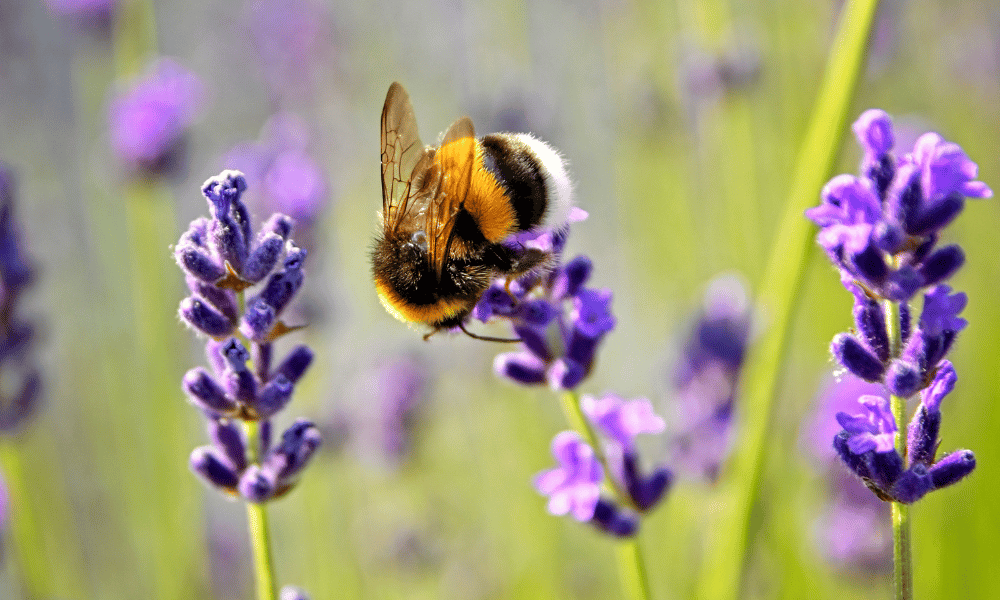
Rosemary – No, rosemary isn’t just for throwing on your potatoes or for marinading your steak. If you’ve never grown rosemary before then you might not even be aware that it produces pale blue flowers in the spring.
This is perfect for bees as nectar is harder to come by earlier in the season. By planting rosemary, you can give bees an early source of nectar before some of the more common flowers bloom.
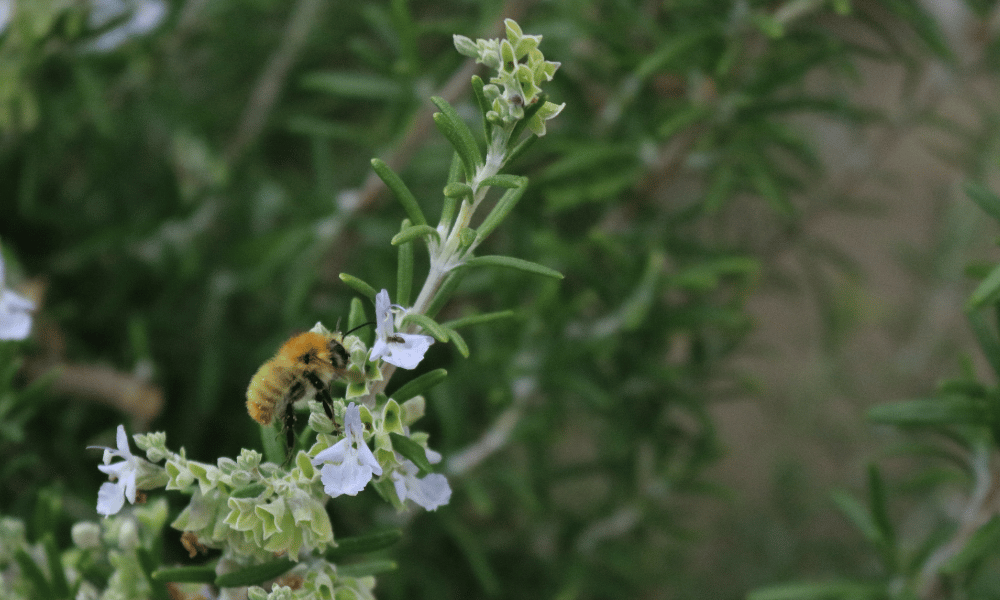
Foxglove – With its long and tubular flowers, foxgloves are particularly attracted to long-tongue bee species who love to get inside each flower to collect the huge source of nectar that foxgloves can provide.
You’ll often see a bumblebee’s rear end poking out of the end of foxglove as it forages for as much nectar as possible.
Delphinium – With over 400 species of delphinium, there’s bound to be one that will work well in your garden and that will attract bees. Where possible, stick to delphiniums in shades of purple or pink as these will work best for attracting bees.
Hardy Geranium – Not to be confused with bedding geraniums you’ll be used to seeing lining the shelves in the garden centre, hardy geraniums are hugely beneficial to bees and are perennials meaning they’ll come bag year after year.
Hardy geraniums can be grown in most conditions but work perfectly plants under taller bee-friendly plants where they’ll intertwine themselves giving bees a whole buffer of blooms to choose from.
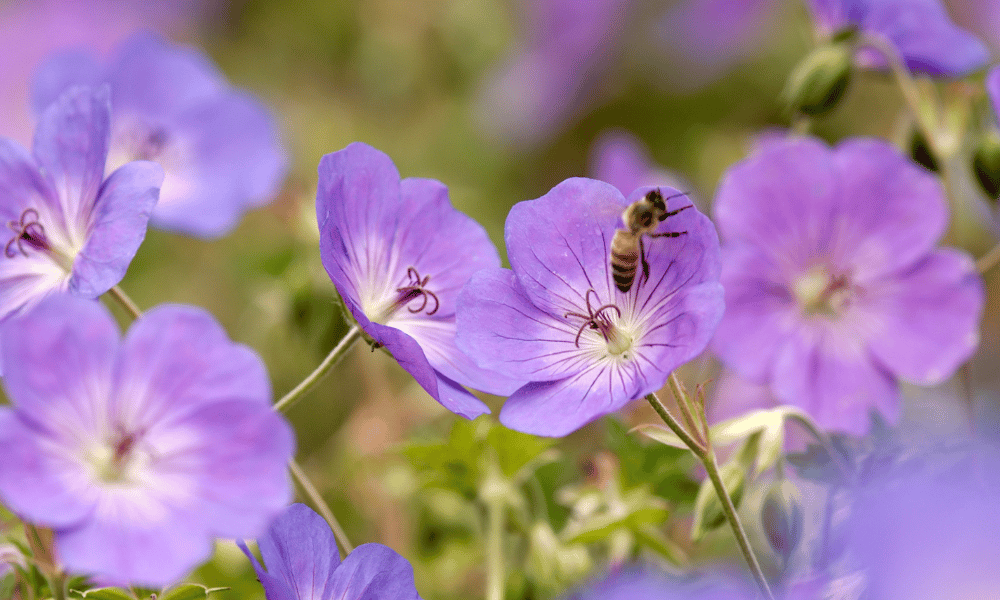
Thyme – Thyme is another herb that makes it onto the list. Nearly all thyme varieties will produce small clusters of white or pink flowers that are surprisingly loaded with nectar.
The benefit of thyme is that it produces so many small flowers that one plant can give a bee a huge supply of nectar without them having to travel far.
Aster – If you’re looking for a flower that blooms later in the season between August and October but that is also hugely beneficial to pollinators then aster is a great choice.
The good news is that it produces pollen and nectar in huge quantities that attract both long and short-tongued bee species including many bumblebees, honeybees and solitary bees.
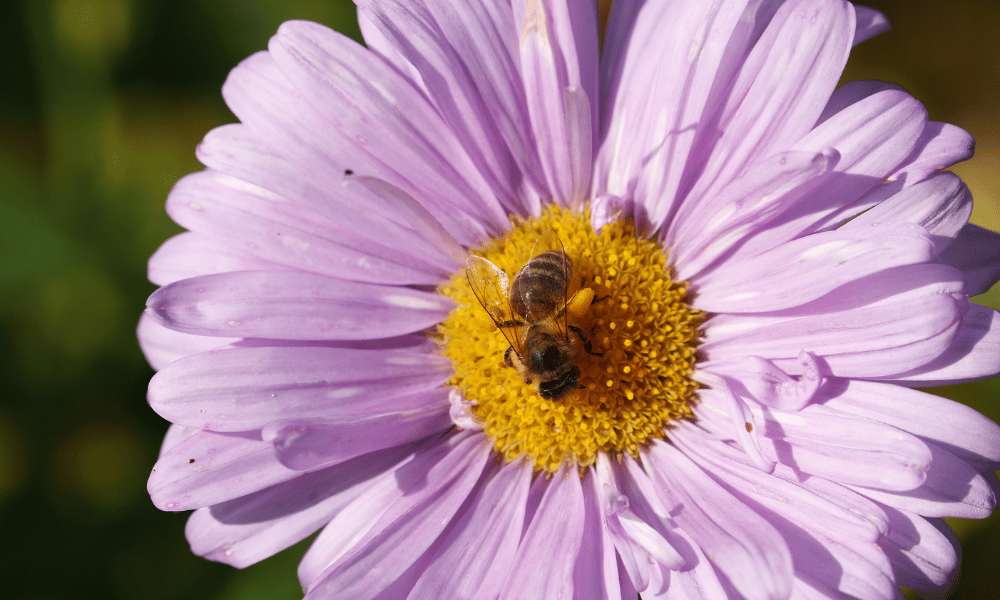
Buddleja – It might also be known as Butterfly Bush, but buddleja doesn’t just attract butterflies. It will also draw in huge swathes of bees who love the huge spikes of flowers. These flowers are actually made up of lots and lots of smaller flowers, each loaded with pollen and nectar.
Scabious – Not only is scabious hugely beneficial to bees, there is actually a bee species that depend on them – aptly named the small scabious mining bee. It is often used in native wild flower mixes but it also works great in cottage gardens and informal bedding.
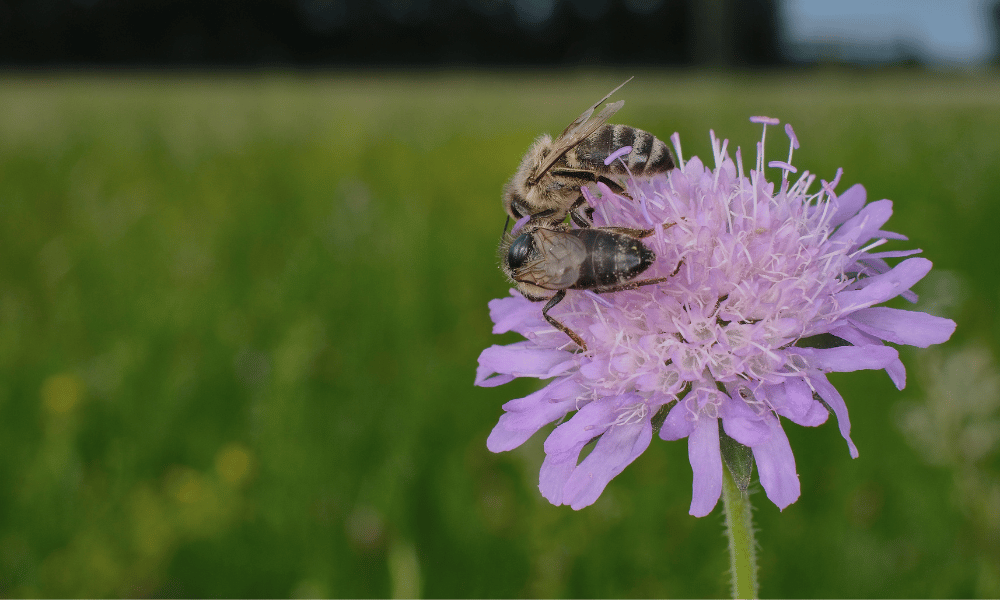
Borage – You might know borage as a traditional addition to a jug of Pimm’s but it’s also one of the most popular plants amongst bees. One of the huge benefits of borage is that it self-seeds.
If you want to put the effort in today to be rewarded for years to come then borage is a great place to begin. It also helps that it’s super easy to grow from seed. In fact, you can almost grab a pack of seeds, sprinkle it over your soil and then give it a quick rake in and you’re done.
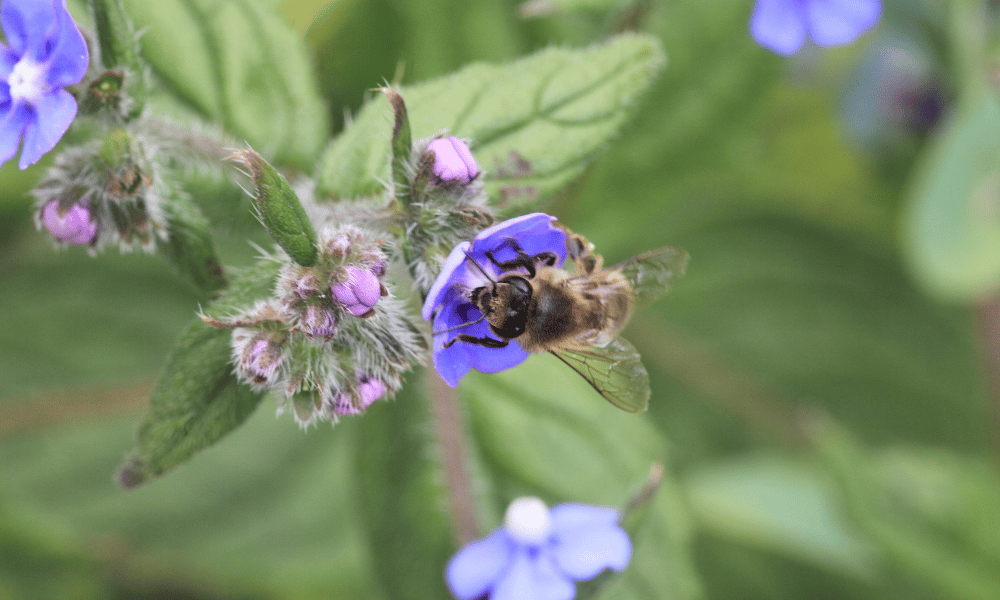
Verbena Bonariensis – Verbena bonariensis is the perfect flower for informal, wild gardens. You can buy a couple of plants and dot them around your garden to have an instant impact. But it’s the subsequent years where you really get your money’s worth as it sows its seeds and spreads itself across your flower beds.
Each stem of the plant is topped with a small cluster is pink/purple flower heads that are made up of lots of tiny little flowers. Bees (and butterflies) happily sit atop these flowing spires of flowers collecting the abundance of nectar that’s available.
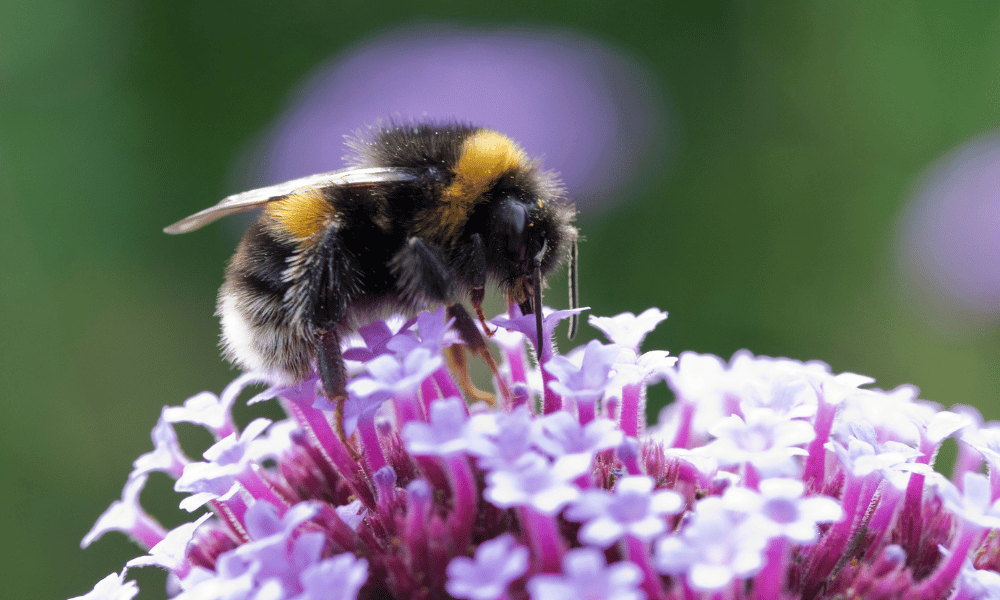
Salvia – The problem with some bee-friendly plants is that they won’t work in your garden either because of the lack of colours available or the informality of the plants. The good news with salvia is that there is going to be a salvia plant that works for you.
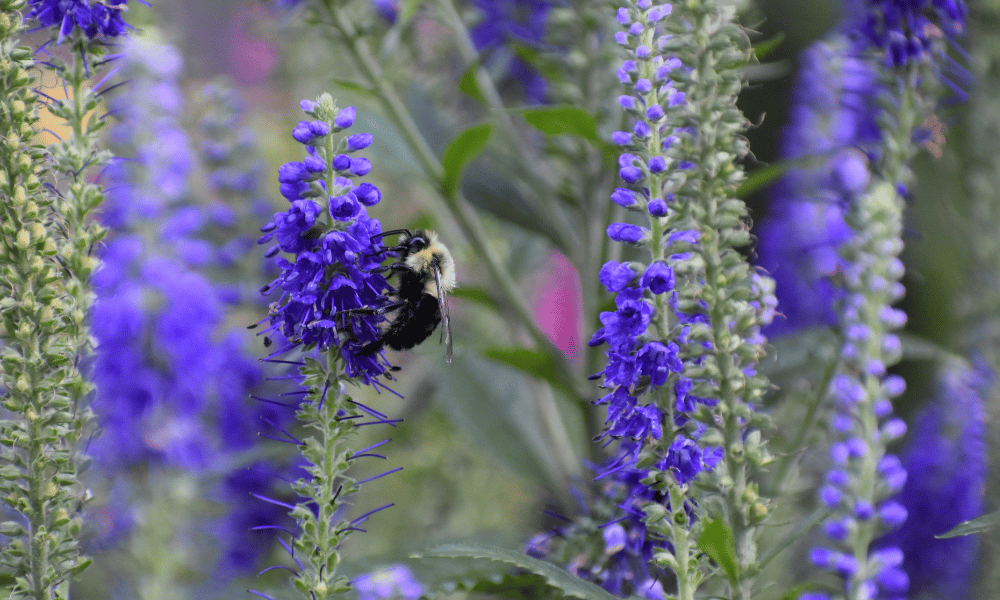
Alliums and Chives – Alliums, and to a lesser extent chives, are some of the most architectural flowers that bring structure and definition to a garden. Huge globes of flowers in shades of purple and white stand tall on solid stems like floating pompoms.
But it’s not just their pleasing aesthetic that makes them perfect for any garden – big or small – but they are also adored by bees and other pollinators. The great news is that they’re carefree and easy to grow.
Grab a bag of allium bulbs from your local garden centre or DIY store, bury them a few inches deep into the ground throughout your flower beds in late Autumn and then forget about them until next year when they’ll magically appear from the ground.
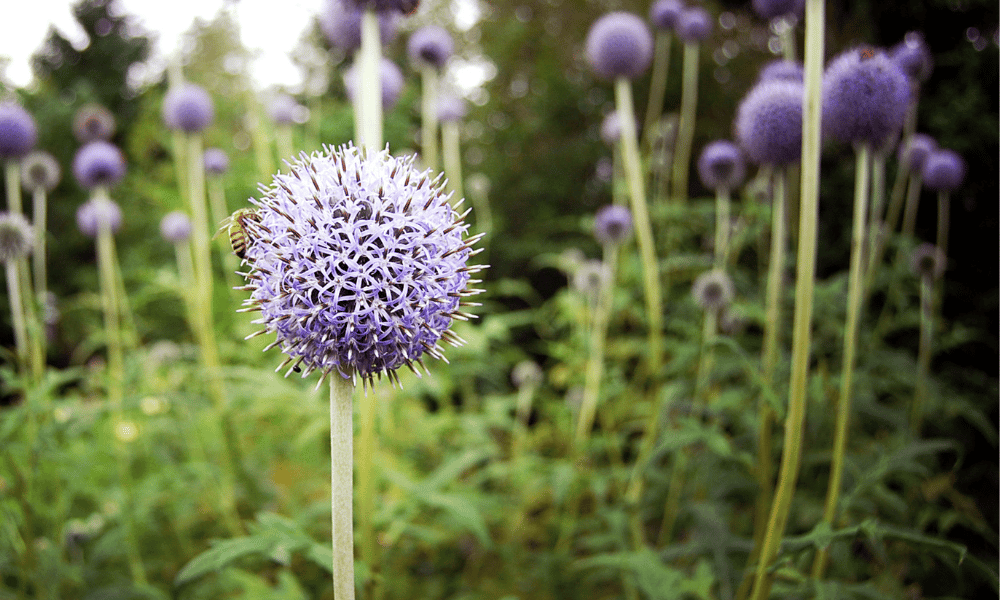
Plants that attract bees all have one thing in common and that is accessible nectar. A bee needs to quickly grab as much nectar as possible. Single-flowered, purple and tube-shaped flowers are all favoured by bees.
No! Unfortunately, there are a lot of flowers that have been cultivated for their looks and nothing else. This often results in nectar that is hard to access or flowers that have no visual appearance to bees, such as begonias. Unfortunately, you need to make sure you plant the right flowers if you want to attract bees.
Install Bees Houses and Hotels
Whether you make one yourself or buy one from your local garden centre, a bee hotel is a great way to give some bee species a place to set up a home in your garden.
Not all bee species will use a bee hotel but plenty do including leaf-cutter bees, solitary bees and masonry bees.
The RSPB has put together an in-depth guide on how to build your own bee hotel, where to position it and how to ensure you have success. You can check it out here.
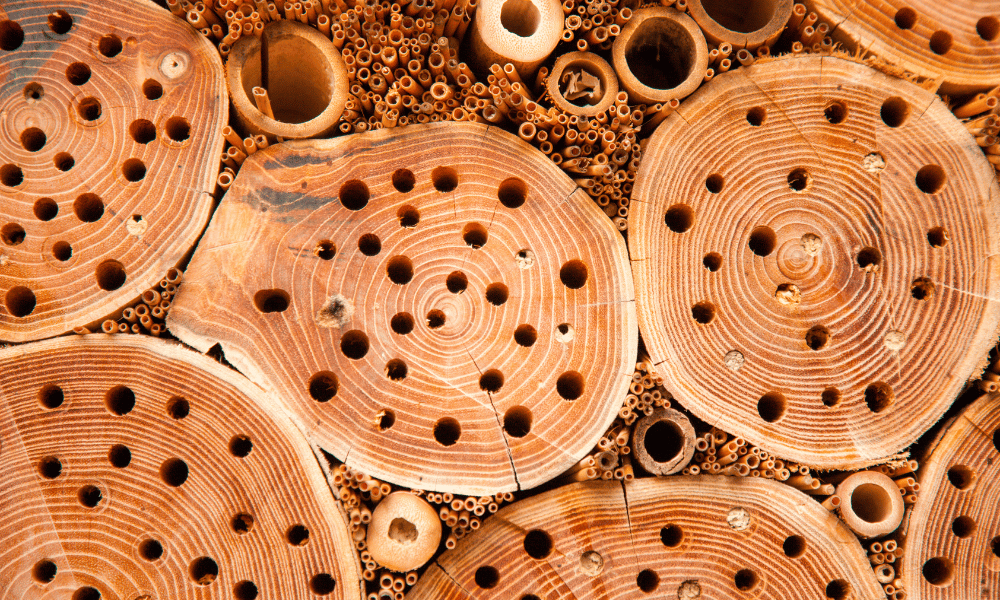
Stop Cutting Your Lawn
We know. A perfectly green, striped lawn that’s free of dandelions, clover and daisies is the dream for some gardeners. But this is an ecological disaster if you want to attract bees.
One of the easiest ways to attract bees (and other beneficial bugs) is to cut your lawn a little less frequently and, when you do, cut it on a high setting to preserve some of those weeds (or flowers that are in the wrong place).
If you’re apprehensive about letting your lawn turn into an overgrown mess then try to keep one small strip or corner free to grow wild whilst manicuring the remainder of your lawn. This will be a great way for you to see the real impact a wild patch can have on nature.
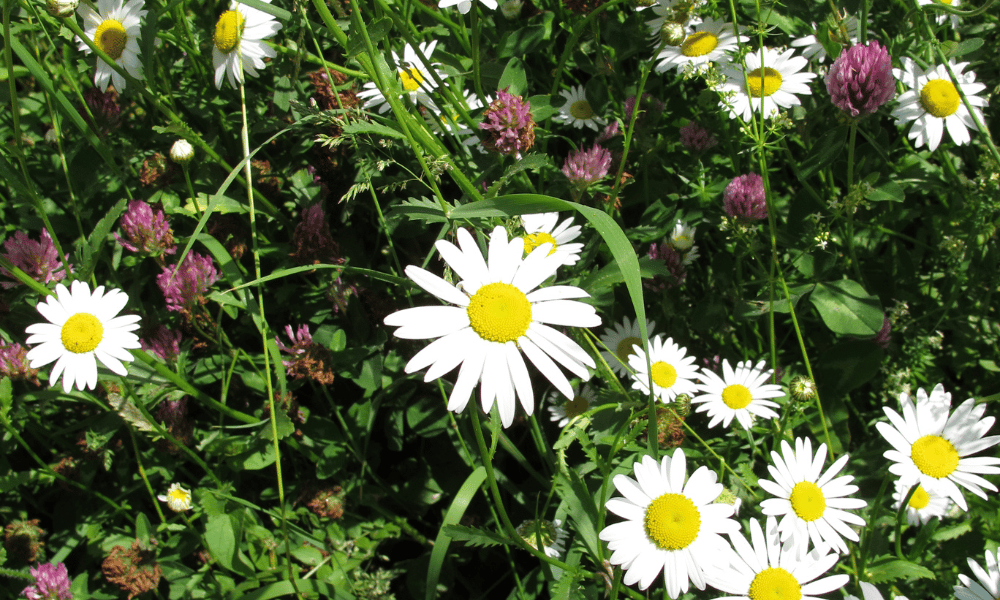
Give Bees Building Materials
Although honey bees will live in hives and nests, this isn’t the case for all bees. Some bees, such as solitary and masonry bees, live on their own and build their own home. They’ll need building materials to put this home together.
Bees don’t need anything complicated. They need dry branches, twigs and leaves mainly. This is why, if you want to encourage bees, you need to be a little less tidy in the garden. Leave a few twigs lying around and allow leaves to sit on the ground.
Provide Bees With Water
When you think of bees, you imagine them flying around grabbing as much nectar as possible and then flying back to their hive. But bees will run out of energy and they get thirsty. This is why a simple source of water in your garden, year-round, can be a great way to encourage bees into your garden.
We often read about how important water is for encouraging wildlife such as newts, toads, frogs and dragonflies… But it’s rare that you hear bees mentioned.
The good news is that you don’t need an extensive pond or a stream to entice bees into your garden. In fact, all you need is a small seed tray full of pebbles and water. The pebbles should sit just above the water line to give the bees someone to land and drink from.
You don’t need plants. You don’t need complex pump systems. You just need a small pool of water that a bee can easily access without any risk of drowning.
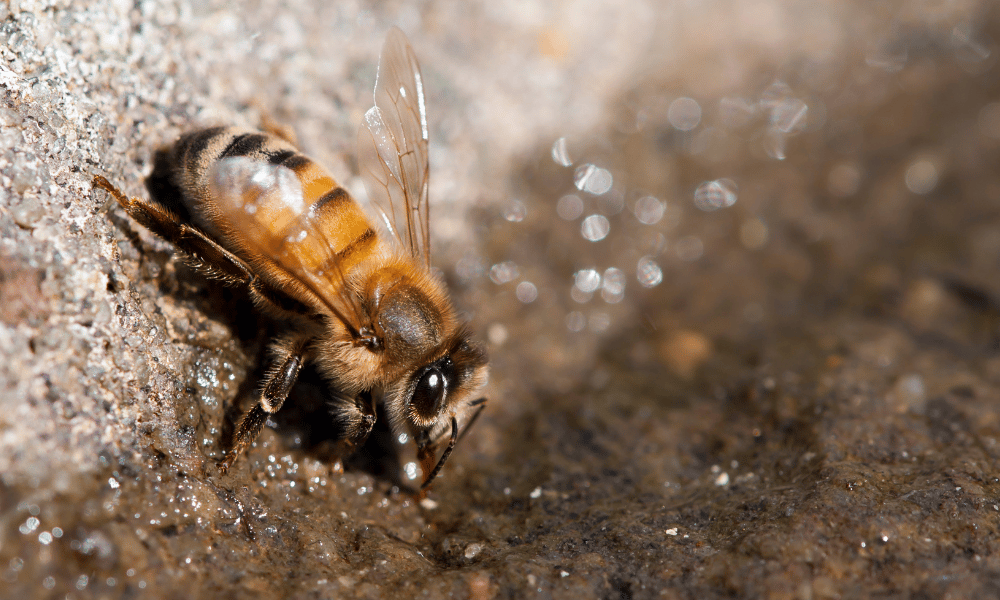
Stop Using Chemicals
There’s no point trying to attract bees to your garden if you’re going to lace your flowers with insecticide, cover your plants in pesticides and douse your lawn in chemicals. No chemical is going to be beneficial to bees.
Unfortunately, in general, garden chemicals are nondiscriminatory.
You might be getting frustrated with that aphid infestation. You may be a little annoyed at slugs eating your cabbages. You could even be determined to have a picture-perfect green striped lawn… But, if you’re using chemicals for any of these then, chances are, you’re going to have a negative impact on bees.


